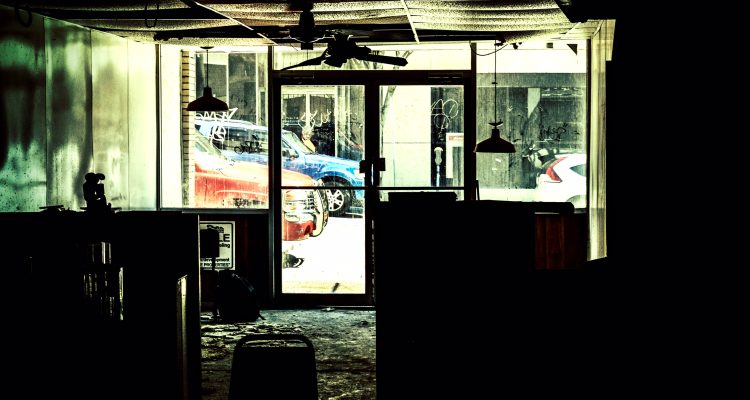Tom’s Pizza was a little different from DiCarlo’s and Tony’s in South Wheeling because that guy would bake the raw cheese a bit before serving, and the owner had more toppings than the others, too.
It was good pie.
Ever since the pizza shop closed for good in the early 1990s, and when the chiropractic practice shut down before then, the pre-1875 structure has sat empty, and portions of the back end are so saturated they could fall away any day. It’s an oddly shaped in-fill building, one that, along Main Street, measures 24 feet, but shrinks to eight feet in the rear.
Constructed by the Wineberg family, the three-story structure also has housed a shoe store and a “notions” shop, a place where customers could purchase dry goods like ribbons, sewing thread and fabric, and rainbows of yarn. It’s sandwiched between Braunlich’s Appliance and the Outdoor Store properties, and it’s also a storefront that’s oh so close to the future Health Plan headquarters.
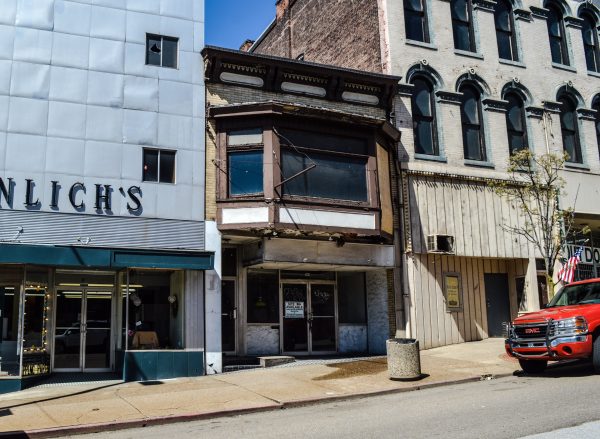
The city of Wheeling has owned the structure for several years, and it has been available free of charge to anyone who proposed a viable redevelopment plan to the members of the City Council Development Committee. That is exactly what Rebekah Karelis and Sarel Venter did last month, and now the partners are awaiting the deed transfer to be finalized.
“In my position with Wheeling Heritage I’ve known about this city program for several years, and I have gone into it several times,” Karelis explained. “We have used it during the Young Preservationist’s ‘lovescaping’ in the downtown, too.
“It’s one of those buildings that was sort of like an unwanted child, and those who have noticed it just think that it’s a big job to upgrade, and they likely thought it would be torn down some day,” she continued. “Most people would have been intimidated by it, including me, but then Sarel came into my life, and I wasn’t intimidated by it anymore.”
The couple met a little more than a year ago while investigating the rehabilitation of a different building, a former church in the East Wheeling section of the city
“We were working on getting the numbers together for the roof project on the Blue Church, and we’ve been looking at the stucco on the outside of the building because that will be the next project once the roof is secure,” Karelis said. “And Sarel is the guy to call when it comes to stucco and plaster work, and this was before he was living here in Wheeling.
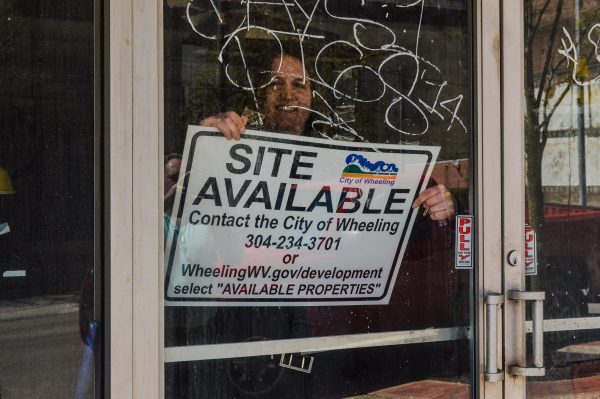
“I called him up here because he’s done work at the Capitol Theatre, too, to look at the exterior of the Blue Church, and he hasn’t left since,” she said with a smile. “Of course, Sarel is native to South Africa, but at that time he was living in the Clarksburg/Grafton area. But now the city of Wheeling and I can benefit from him living right here.”
Karelis is a historian employed by the Wheeling National Heritage Area Corp., so she has been aware of the building for several years. Her research has revealed that it has not only been the home of Tom’s Pizza but also a series of retail-related businesses. She and Venter plan to resurrect the storefront and to renovate the upper floors for residential living.
“It has been predominately owned and passed on by a Jewish family by the name of Wineberg, and that’s who originally built the building as an in-fill building that shares walls with the buildings next to it,” she explained. “There have been a few different things inside the building since it was constructed at some point around 1872, and, along with Tom’s Pizza and the chiropractor’s office, there was a shoe store and a couple of other shops.
“We plan to keep the upstairs as original as possible, but we also plan to open up the third-floor area into a loft area that would become a bedroom,” Karelis said. “But we are both historical preservationists and lovers of historical architecture, so we will keep a lot of those elements in place. But there is going to be a little of a modern feel to it as well.”
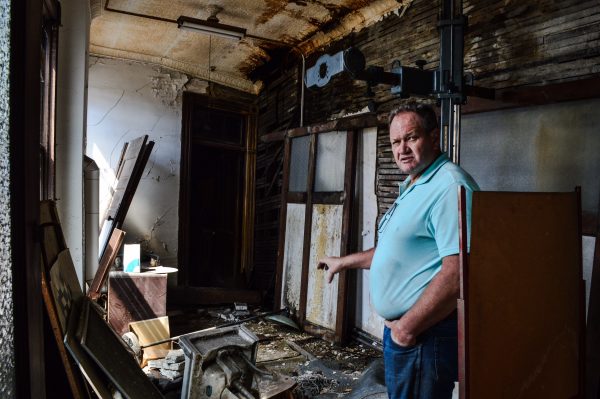
Opening the Door for Opportunity
The history of downtown Wheeling is one often recalled by older residents who tell the tales of bustling sidewalks, a plethora of retail shops, and the access to anything necessary for survival. That environment has evolved away from retail to professional over the years, and many estimate more people work within the downtown district today than ever before, but the private sector has yet to add merchandise into the mix.
With the Health Plan project soon to get under way in the 1100 block, the ongoing redevelopment of the former Boury Warehouse into nearly 80 loft apartments, and several other private projects in motion, Karelis and Venter have identified a need following the many demolitions that have taken place in the past 15 years.
“We feel that there is a lack of rentable, useable retail space today, but we do see many potential places, but that will take more of an investment than we can make. That’s why we believe the time to partner with others has arrived so we can be successful with bringing back so many of the structures the downtown area still has,” Venter said. “We would like to partner with those who have access to the capital but likely do not have the know-how to be able to accomplish such a thing on their own.
“So for us this is an introductory step, but after this we will start looking for another location, and the idea would be to say that we can take this building with a collapsed roof or a collapsed floor and turn it into a functional space again,” he continued. “Many people do not believe that it’s possible to do these things, but it can be done, and that’s what we plan to prove with this first step.”
While the couple plans to reside on the second and third floors, the street-level space will be renovated and leased by their new company, 1069 Main Street LLC.
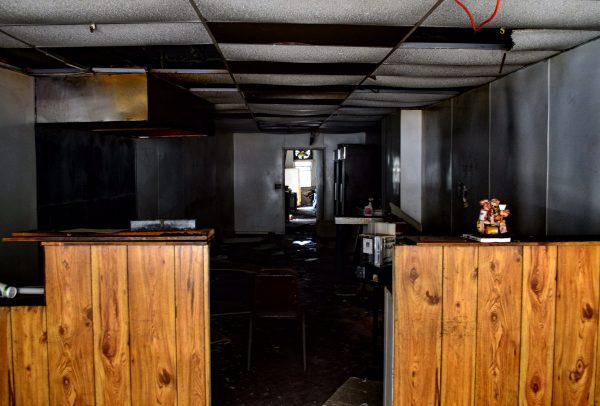
“We actually started talking about this well before we heard about the Health Plan headquarters coming to downtown Wheeling, but since it’s really fallen into place as far as being an opportunity for someone,” Karelis said. “Right now we do not have a plan for anything specific as far as the street level is concerned. We know it’s going to be a retail space, but it’s not our plan to operate the business that does locate there.
“We just want to bring the storefront back as an available space for rent. Whether it’s an office or a small store, that’s not up to us. It could become a lot of different things,” she said. “Our plan is to lease it out for a deli, a coffee shop, for whatever someone believes could work in that space. We do feel sure that we will find someone who wants to take advantage of such a great opportunity.”
A part of the project involves stripping away the renovations that were conducted throughout the history of the structure to reveal its original appearance.
“Part of our vision for the building is to bring back the front façade to the way it was originally,” Venter said. “Right now it’s hidden behind what someone in the past did to it, but it’s under there, and we plan to bring that back to its original beauty. The upper part of the building its still original, but the street level, right now, is not.
“On the inside we really want to bring the period feel back to it, and we feel too many restorations are performed in a helter-skelter manner,” he continued. “We want to bring that authentic feel back to it on the inside and the outside so it can return to an appropriate style of the late 1800s.”
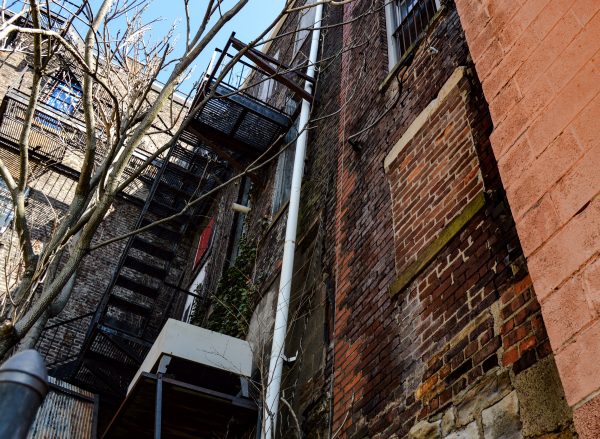
Hours of Hands On
This is not a project without challenges, and although Karelis and Venter will perform most of the restoration work, the couple expects to spend as much as $120,000 to preserve the leaking roof, the slouching floors, and the damaged ceilings and walls.
“We will move forward with a dual approach for the first and second floors, but before anything can be done we must address the portion of the building that is in danger of falling down,” Venter said. “And then we will have to address the overhang area in the front of the building because that is becoming a danger because of the moisture.
“One of the first things we will do is place a decorative barrier in front of the building so we can erect the scaffolding behind it so we can secure that area,” he continued. “We will also work on the front façade at the same time we work on the safety issues in the front and behind the structure. It is difficult to decide where to spend your first hours, but once we are sure nothing is going to fall, we will then make sure that the front has a visual impact for those passing by.”
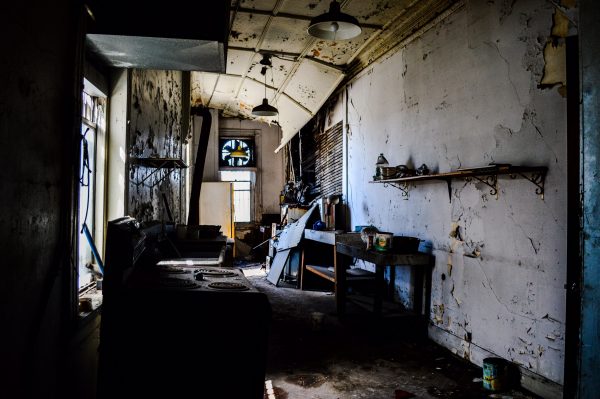
The back of the building is much worse than what visitors to the downtown see as they navigate Main Street, and Venter has determined he must remove and replace that portion of the structure from the ground up.
“The beauty of that demolition is that it pertains to a very small area of the building that is located in the back, and it’s very localized. That part of the project will only concern about 14 feet on all three levels of the structure,” Venter explained. “The nice thing about it is that we’ll be able to start fresh, and it’s an area that’s between 12 and eight feet wide because of the way the structure was constructed in the first place.
“Because the damage in the back of the building has gone through all of the levels, it’s actually easy to get rid of it and start from scratch rather than trying to renovate what is left,” he continued. “It’s pretty far gone at this point, so starting fresh is 100 percent the way to go for us.”
Karelis and Venter outlined to the members City Council Development Committee – Mayor Andy McKenzie, Vice Mayor Gene Fahey, and Councilwoman Gloria Dellbrugge – that they would need a three-year period to complete the renovation, but their goal is to move quickly in order to prove their capabilities to the community.
“We really have two timeframes. One, we gave the city a three-year timeframe as a promise, and we will keep that promise, but we also have our own timeframe, and that is much, much sooner than three years from now,” Venter admitted. “We want to do it quickly to show the city, potential investors, and everyone in Wheeling what is possible and how quickly it can be accomplished.”
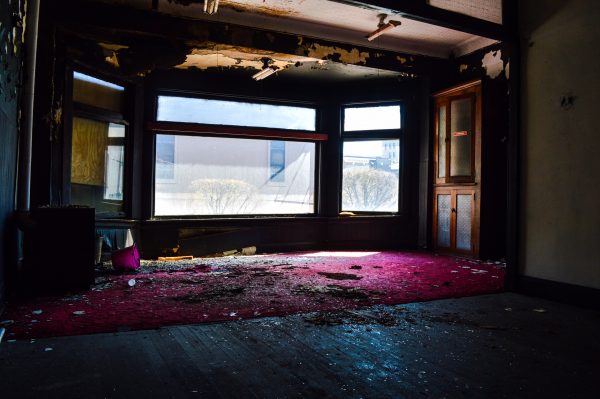
Venter has worked on many local buildings, including the Scottish Rite Building on 14th Street in East Wheeling, Shaw Hall on the campus of West Liberty University, and the First Capitol Building on Eoff Street.
“And this is our first step as partners. This will not be the only building in Wheeling that we will work on,” he continued. “The beauty of this project, for us, is that we want to take this first project and show what we are capable of. We want to take this place and turn it into one of the gems of the downtown, and then we want to continue our work on many more buildings and do the same thing.
“We will do this in a short period of time once the deed is transferred into our ownership because we want people to become aware that if we can do this with a building in this shape, then we can do the same with any other building in the city,” Venter added. “When we do go after larger project, we will then look for partners to help us make other buildings accessible and useful again.”
(Photos by Steve Novotney)


